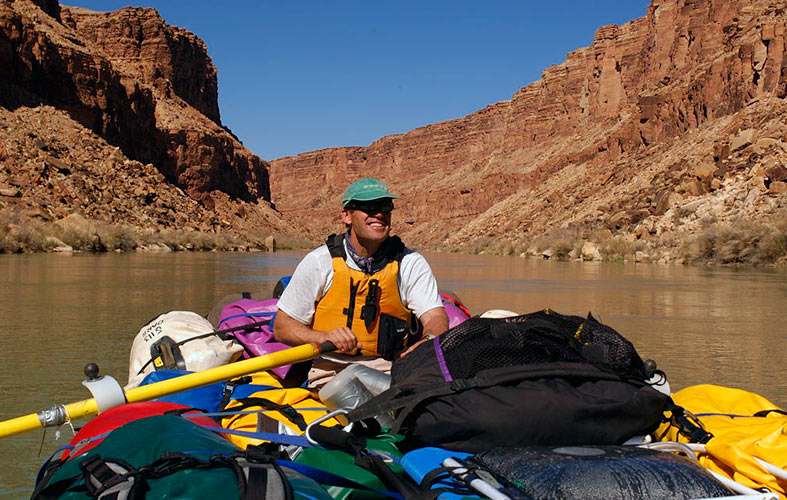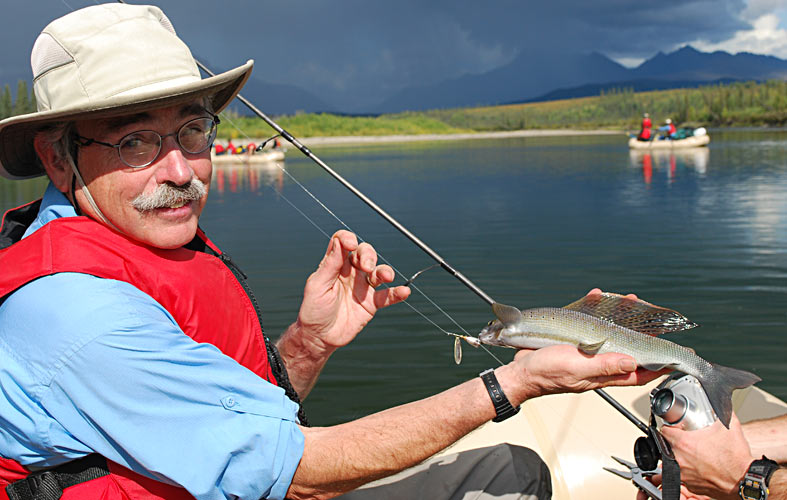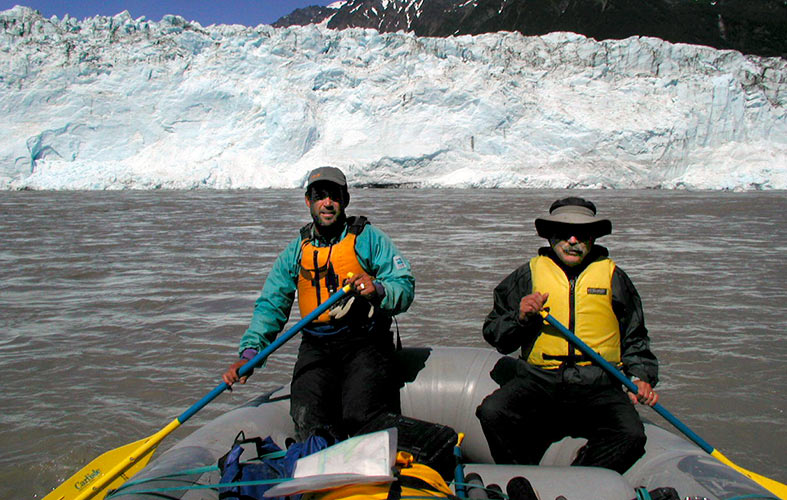Silo-busting
A few years later, in 1998, Mount and Moyle founded the UC Davis Center for Watershed Sciences, which brings scientists from different academic backgrounds — engineers, biologists, geologists, economists — across campus together to work on water problems.
Now directed by engineering professor Jay Lund, the Center for Watershed Sciences has become one of California’s most influential and respected water-related research institutions.
In 2002, the center’s academic silo-busting was brought to students with the creation of the ecogeomorphology class.
“Peter and I both feel very strongly that teaching is fun, it’s an art,” Mount said. “Inspiration is the challenge. You can teach anybody anything, but you can’t necessarily inspire them. So we were looking for ways to inspire them."
Outdoor Adventures came calling
About a decade earlier, in 1983, inspiration walked through Mount’s classroom door in the form of Dennis Johnson, then director of UC Davis Campus Recreation and Unions’ Outdoor Adventures program. Johnson invited Mount to take his graduate students on a field trip to Central California’s Tuolumne River. It was a transformative experience for the students and for Mount, who credits it with shifting the trajectory of his life and career.
In 1986, Outdoor Adventures trained Mount to become a river guide, and he shifted his focus to rivers. He went on to write a book about rivers and streams, became a well-known water expert and co-founded the Center for Watershed Sciences. He now works on water policy as a senior fellow with the Public Policy Institute of California.
“And it all goes back to a rafting trip I took with Outdoor Adventures in 1983, 33 years ago,” he said.
What’s in a name
So by the time Moyle and Mount were ready to begin the ecogeomorphology class, whitewater rafting was already part of Mount’s teaching repertoire, and the benefits of interdisciplinary science were clear in their minds. They just didn’t know what to call it.
They went with “ecogeomorphology,” a word they invented that mashed ecology, geology and morphology together. It’s the kind of name Mount cheerfully admits values compromise and accuracy over catchiness, yet is now peppered throughout the internet.
Whitewater wisdom
More than just a cool whitewater adventure, these class river-trips shaped the group’s scientific thinking, testing hypotheses along the way. They ran the Green and Yampa Rivers, ending at Dinosaur National Monument. Other groups rafted British Columbia’s Skeena River, Alaska’s Copper and Kobuk rivers and others.
The first class trip to the Grand Canyon was in 2003, and students have traveled there for the past five years.
Mount held the Roy J. Shlemon Chair in Applied Geosciences, which continues to partially fund the class river trip.

Class shot of UC Davis ecogeomorphology students and instructors in 2006, when they ran the Green River from Utah’s Flaming Gorge Dam to Colorado’s Dinosaur National Monument. Photo: UC Davis Center for Watershed Sciences
The geologist’s church
The class also takes a group of undergraduate students on a similar trip to the Tuolumne watershed each spring, journeying from Tuolumne Meadows to Hetch Hetchy and to the confluence with the troubled San Joaquin River.
But for all of the rivers traveled, the quintessential trip for the class has become the Colorado River in the Grand Canyon. Few places in the world reflect its combination of life, rocks and water so brilliantly.
“The Grand Canyon is a geologist’s church,” Mount said. “We go to worship. It’s a shrine. It’s spiritual. And if you are not moved by it, well, it sucks to be you.”
Inspiration and imitation
Ecogeomorphology alumni are now scattered throughout the nation’s water management agencies, nonprofit organizations and universities.
Alumnus Alex Fremier ’07 traveled down British Columbia’s Skeena River with the Ecogeomorphology class in 2004. He remembers fishing with Moyle and cutting open the stomach of a bulltrout, a voracious eater, and finding three sizable voles inside.
“It was a complete picture of the terrestrial environment feeding the aquatic environment,” he said. “And Peter was like a child, so giddy. It wasn’t fake; it was so sincere. To see a mentor of mine in that experience and share it with him rather than in the classroom environment, where you can’t always see the faculty member as an inquisitive person, was really memorable.”
He was so inspired that he’s working to create a similar program at Washington State University, where he is an associate professor in the School of the Environment.
“I’m building this program because of the program built at UC Davis,” Fremier said. “I saw it as a way to get students involved in the outdoors. But even deeper than that is I want to infuse them with scientific tools so they can have a louder voice later on.”
- Kat Kerlin
“The Grand Canyon is a geologist’s church. We go to worship. It’s a shrine. It’s spiritual. And if you are not moved by it, well, it sucks to be you.” – Jeffrey Mount, UC Davis professor emeritus, ecogeomorphology class co-founder








